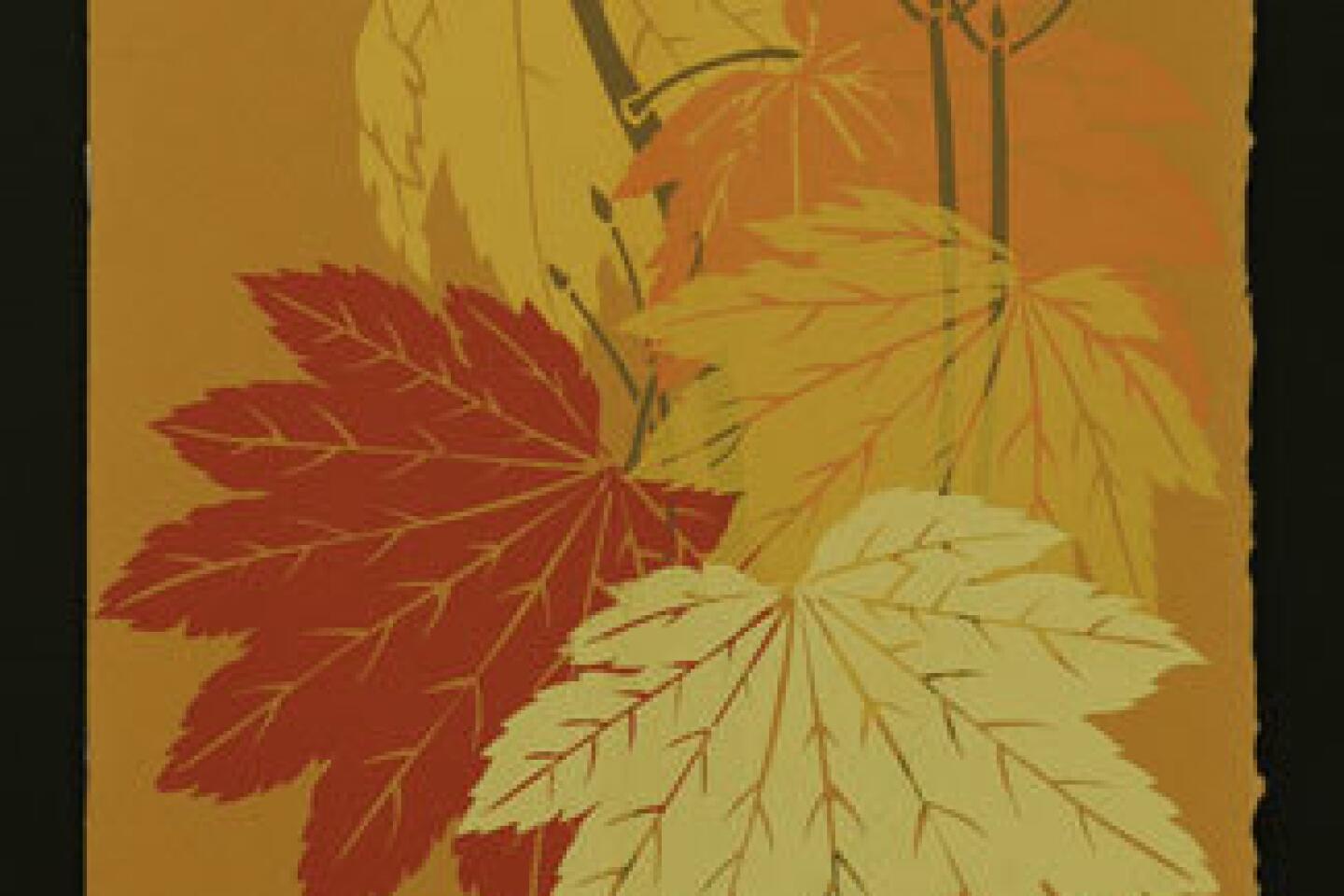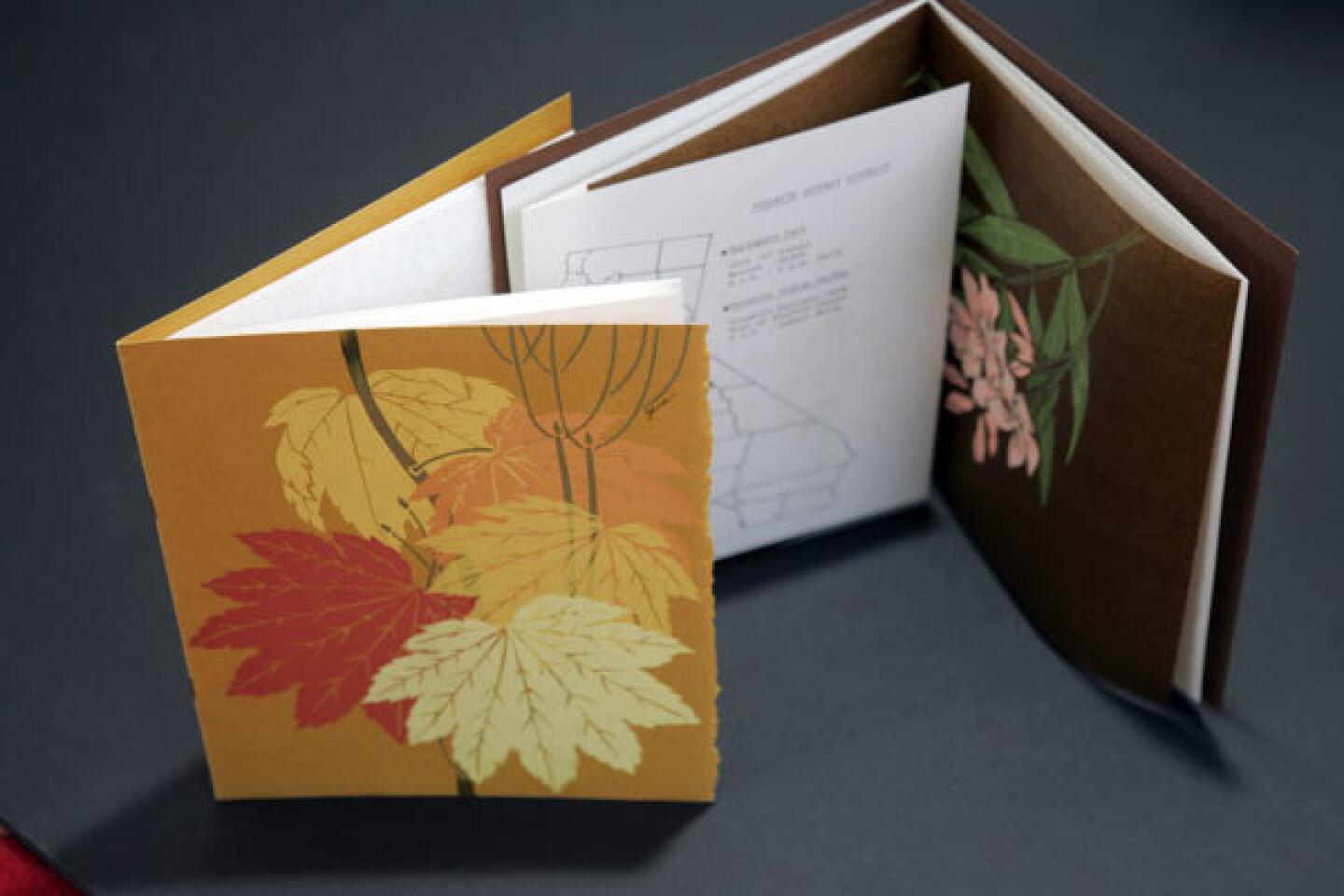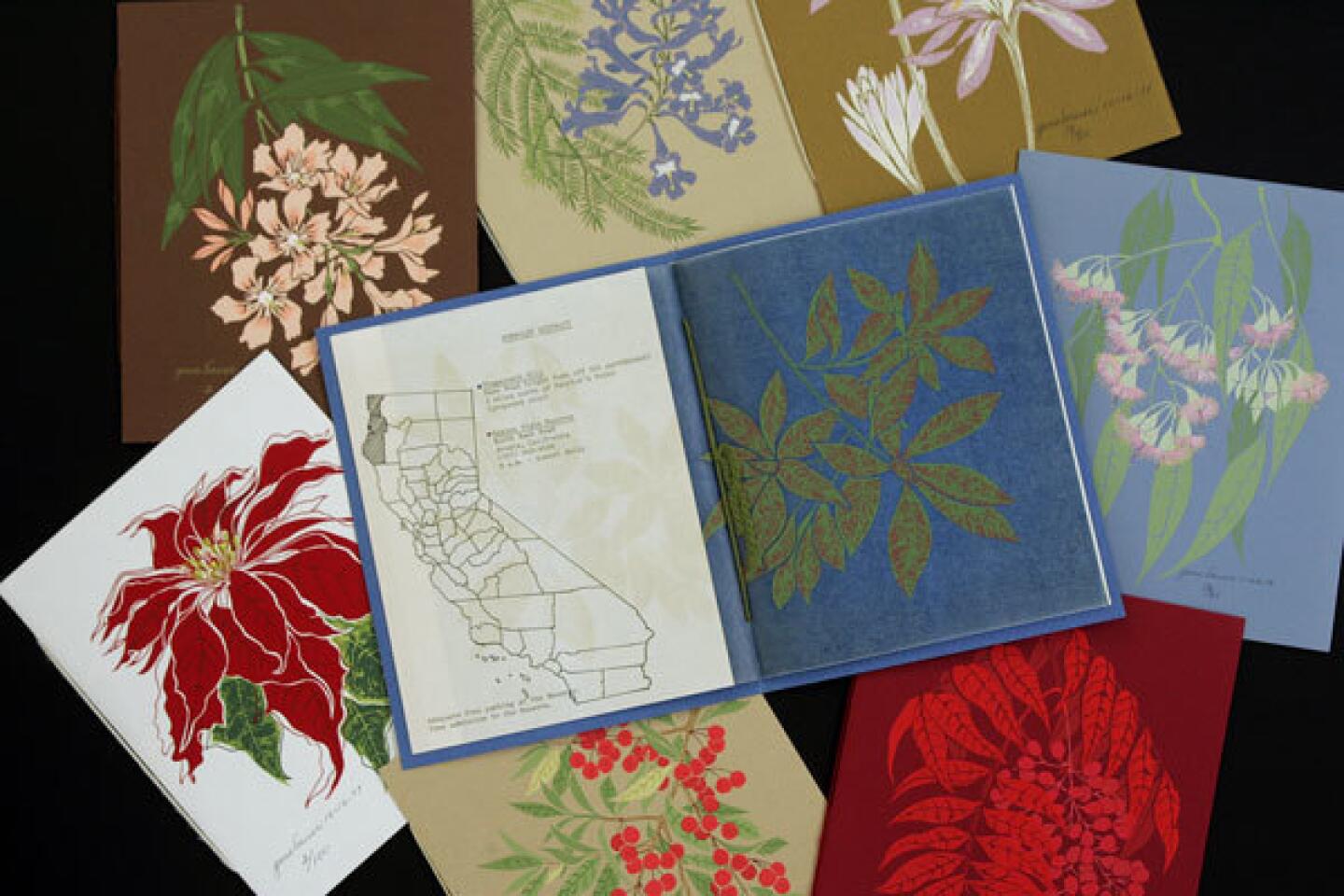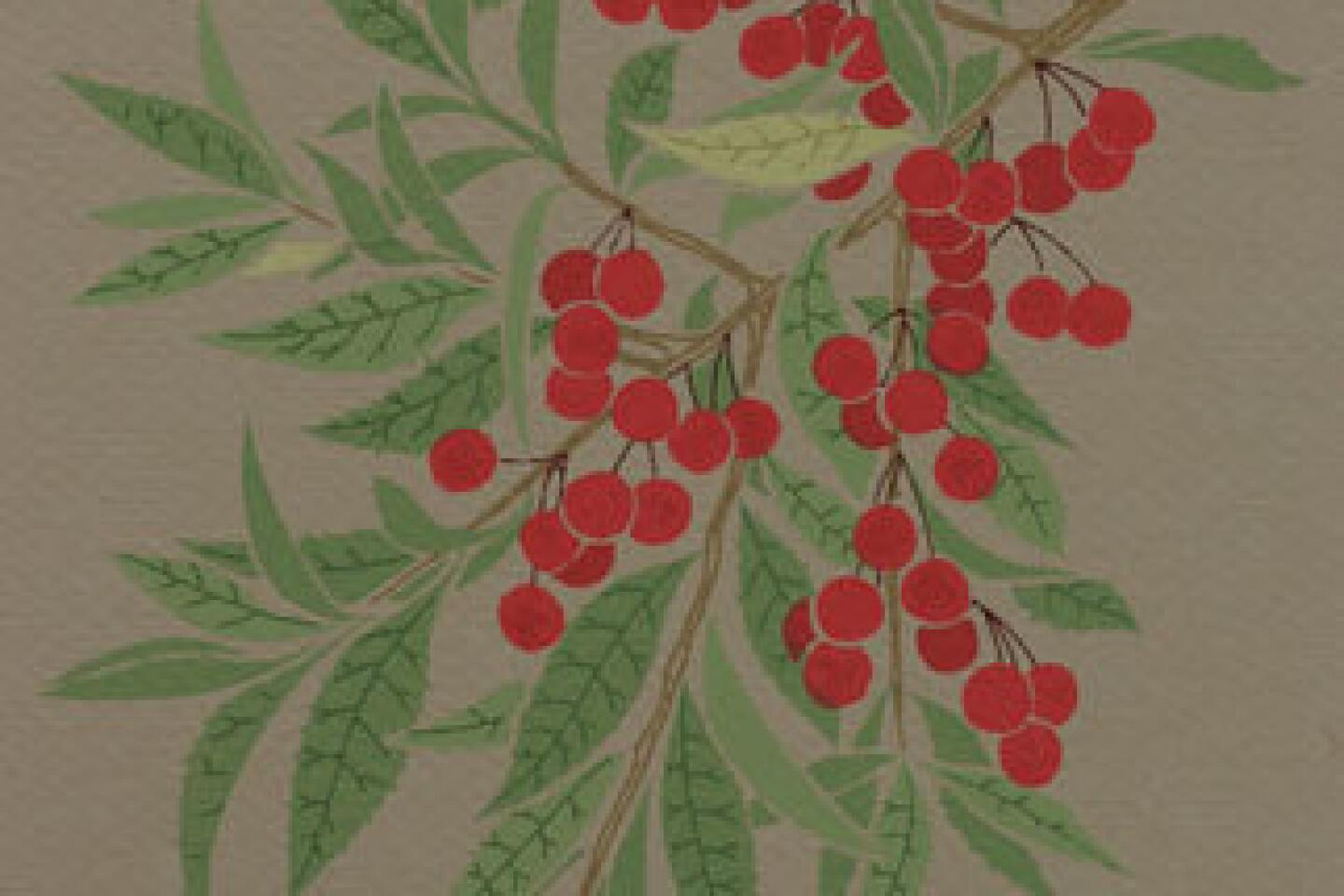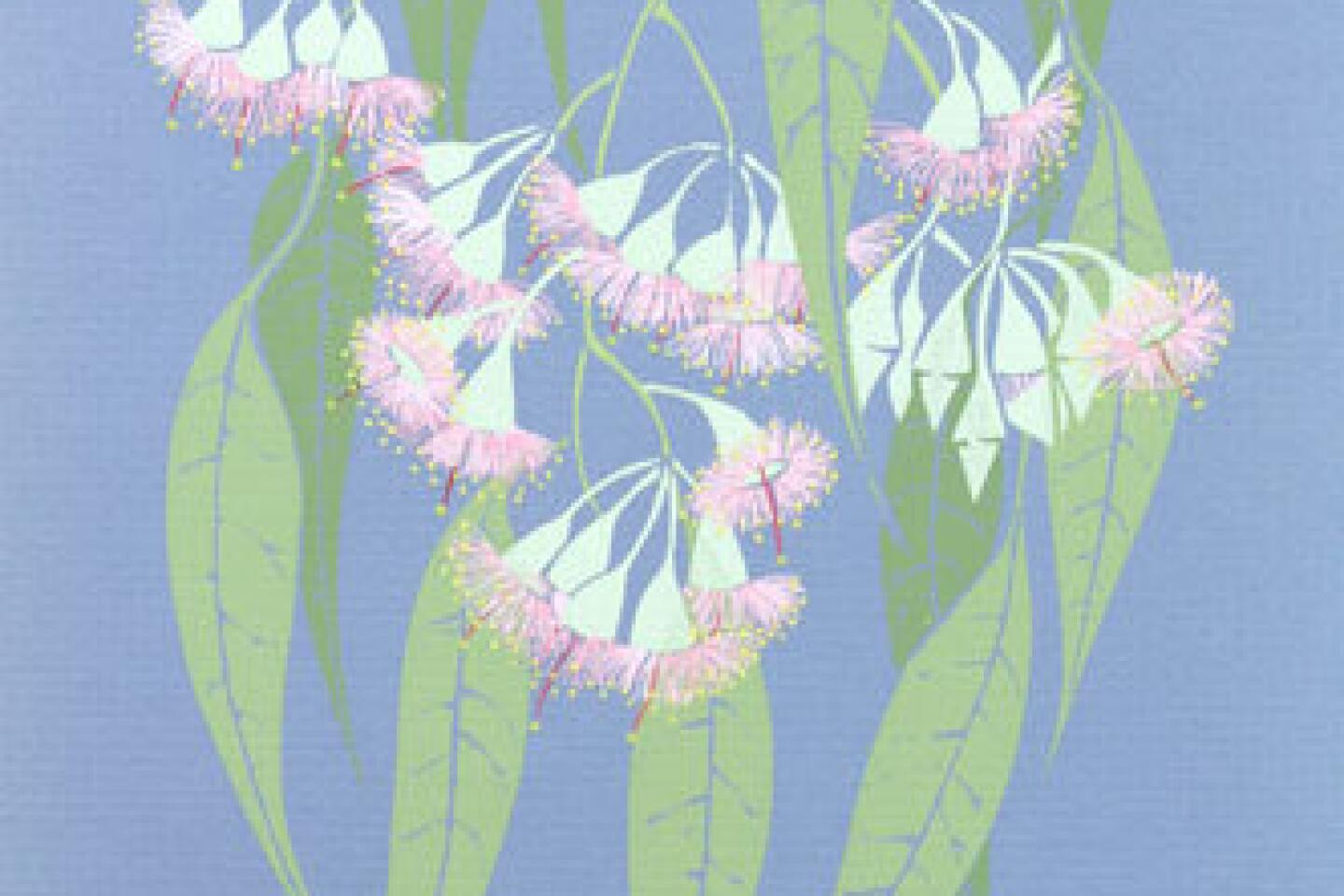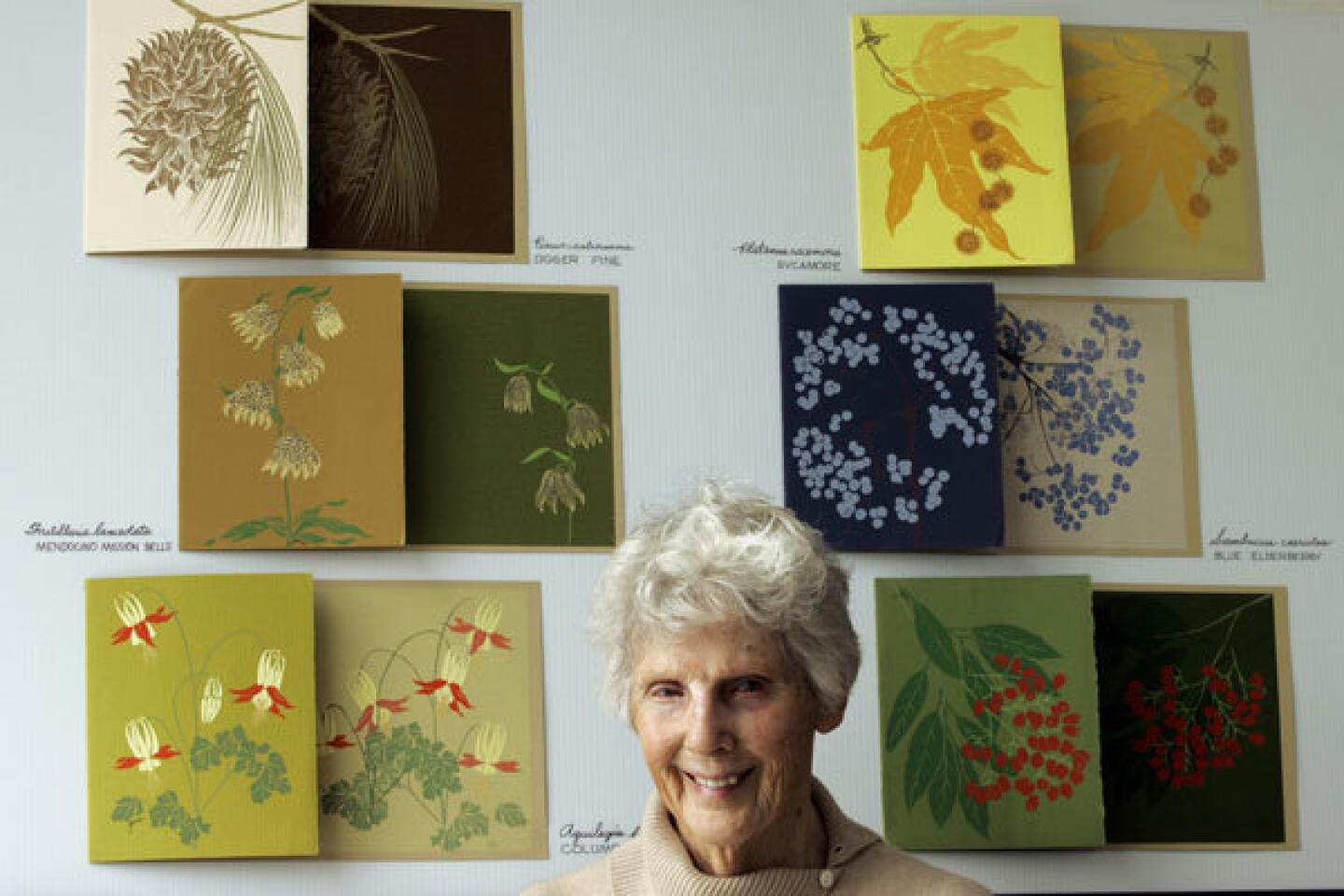‘Botanical Serigraphs: The Gene Bauer Collection’ illustrates native California plants
- Share via
Gene Bauer has planted close to a million daffodil bulbs in the hills behind her home in the San Bernardino Mountains. For 40 years, she opened her property for three weeks each spring, free of charge, so the public could bask in the glory of all that yellowness, in the passion and hard work of a woman intent on making the world a more beautiful place.
Bauer said the people who flocked to her home each year were generally polite and respectful. But she’s 83 now, and preparing the property for visitors has become too much to handle. Last year she posted signs around her house saying the daffodil garden was closed forever.
It still is, but now Bauer has filled the void with a different offering of beauty: her collected artistic works in the book “Botanical Serigraphs: The Gene Bauer Collection.”
Bauer started making her botanical serigraphs in 1972, when she became the native flora chairwoman of California Garden Clubs Inc. She was the first person to hold this position, and her main job was to help educate other members of the club about the native plants of California.
A normal person might have simply sent an occasional letter or postcard to leaders of the 26 districts in the club, just as a normal person might plant three dozen daffodils behind her house instead of hundreds of thousands.
Bauer skipped postcards and created a series of monthly booklets, each dedicated to one flower that inspired her during trips to arboretums and botanical gardens around the state. When she came across a plant that caught her eye, she would draw a picture of it with colored pencils, then she hand-screened that image onto thick cover stock. She screened another depiction of the plant on tissue paper, and a simpler drawing — often just a leaf detail — went on an oversized envelope. The serigraphs were steeped in ‘70s colors but still have a graphic freshness 40 years later.
The artwork was accompanied by an essay that, though thoroughly researched and carefully crafted, read like a love letter. She included a map of California with hatch marks that indicated the flower’s habitat as well as complete information on the garden where she had originally stumbled upon it. All these pieces were assembled in a booklet half the size of legal paper, bound with a single piece of yarn.
She chose all types of plants: the orange and red splotched lilies (Lilium humboldtii var. bloomerianum), the bright white Matilija poppy (Romneya coulteri), and one of our most iconic natives, the California redwood (Sequoia sempervirens). Of the pale blue blossom of the buckthorn she writes, “I marvel at such a cool, celestial color emanating from an earthbound planet.”
“Botanical Serigraphs” collects the artwork and edited versions of the essays.
“I was under no illusion that I could add much knowledge to what had already been written about the vast array of California native flora,” Bauer writes in the introduction. “Rather, with each monthly message devoted exclusively to one plant, I hoped to better acquaint my fellow inhabitants of the state, as I wrote at the time, ‘with the marvelous treasures that exist here and to make them more aware of the necessity of preserving them for those who follow us.’ ”
In the two years Bauer was native flora chairwoman, she made 27 booklets. She created 29 more from 1976 to 1978 as chairwoman of arboretums and botanical gardens. The booklets were usually produced in a numbered edition of 50, although in December she sometimes upped her output and gave the extra booklets to friends as holiday gifts. All were given away free, and Bauer paid for her own materials.
“I just did it because I loved doing it,” Bauer said by telephone from her home near Redlands. “I like nature, and I like beautiful things.”
A 1997 wildfire destroyed Bauer’s house, along with her personal collection of the booklets. Miraculously, several people had their copies from decades earlier and could return them to the artist. Among the admirers of her work: Jack Dangermond, founder and president of the mapping technology company ESRI, who remembered meeting Bauer, seeing her daffodils and marveling at her prints in the late 1970s.
“They were unique and beautiful pieces of art, like nothing I’d ever seen before,” he said.
He asked the people who worked in the ESRI press whether they could make a book out of Bauer’s pamphlets. Though the company usually publishes books on mapping and related equipment, they said yes.
“I definitely wanted a copy of this book,” Dangermond said. “It’s an artistic and beautiful expression of an artist that is a very rare person these days.”
